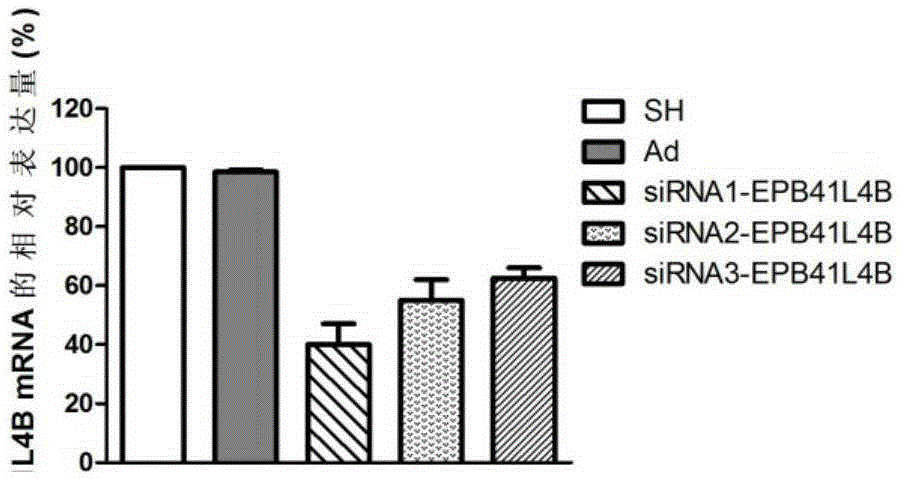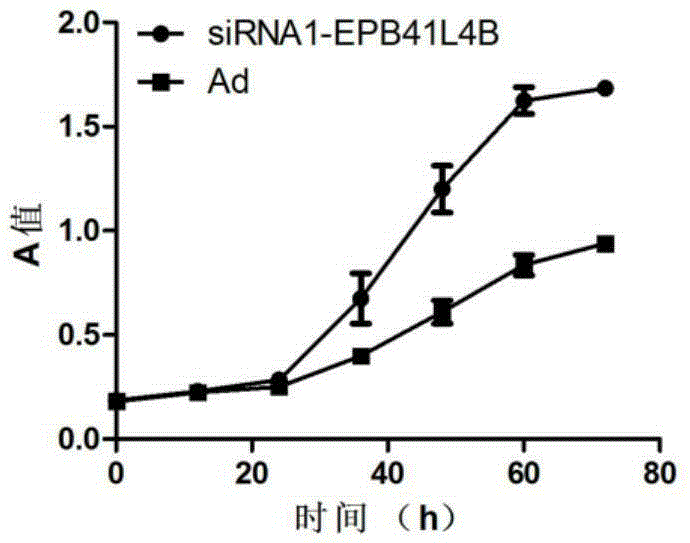Application of EPB41L4B gene in diagnosis and treatment of Parkinson disease
A Parkinson's disease, gene technology, applied in the treatment, the human EPB41L4B gene in the field of Parkinson's disease diagnosis, can solve the problems of difficult promotion, expensive examination and other problems
- Summary
- Abstract
- Description
- Claims
- Application Information
AI Technical Summary
Problems solved by technology
Method used
Image
Examples
Embodiment 1
[0052] Example 1 Screening for gene markers associated with Parkinson's disease
[0053] 1.1 Sample collection
[0054] 10 normal blood samples and blood samples from patients with Parkinson's disease were collected, and all the above samples were obtained with the consent of the ethics committee.
[0055] 1.2 RNA sample preparation and quality analysis
[0056] 1.2.1 Preparation of RNA samples
[0057] Total RNA was extracted using the RNA extraction kit from Promega. Specific steps are as follows:
[0058] 1) Take 1ml of whole blood collected in a test tube treated with heparin or EDTA, and put it into a sterile centrifuge tube;
[0059] 2) Collect blood cells: centrifuge at 3000rpm (400g) for 5min, carefully suck off the supernatant from the top of the sample;
[0060] 3) Add 1ml of blood cell lysate, pipette carefully 4-5 times, and resuspend the sediment;
[0061] 4) Centrifuge at 3000rpm for 5min;
[0062] 5) Repeat steps 3), 4) twice (three times in total);
[0...
Embodiment 2
[0088] Example 2 QPCR sequencing verification of differential expression of EPB41L4B gene
[0089] 1. According to the detection results of high-throughput sequencing, the EPB41L4B gene was selected for large-sample QPCR verification. According to the sample collection method in Example 1, 80 cases of blood from Parkinson's patients and blood from normal people were selected.
[0090] 2. The RNA extraction steps are the same as in Example 1.
[0091] 3. Reverse transcription: use the reverse transcription kit of TAKARA company to operate. Specific steps are as follows:
[0092] (1) Take 2 μg of total RNA for reverse transcription, add 2 μl of Oligo(dT) and mix well; 70°C water bath; 5 min and then immediately ice bath for 2-3 min;
[0093] (2) Construct a 25 μl reaction system, including 5 μl of 5× reverse transcription buffer, 5 μl of dNTP (2.5 mM), RNasin 40 U / μl, M-MLV 200 U / μl, and supplement nuclease-free water to 25 μl;
[0094] (3) After 42°C water bath for 60 minut...
Embodiment 3
[0114] Embodiment 3 suppresses EPB41L4B gene expression
[0115] 1. Cell culture: dopamine neuron cells SH-SY5Y, in DMEM / F12 culture medium containing 10% fetal bovine serum and 1% penicillin / streptomycin (pH7.2~7.4), at 37°C, 5% CO 2 , Cultivated in an incubator with a relative humidity of 90%. Change the medium once every 2 days, and subculture when the cells grow to 90% contact, wash with PBS, add 0.25%-EDTA trypsin to digest the cells from the bottle wall, and culture with DMEM / F12 containing fetal bovine serum solution to stop the trypsin digestion reaction, centrifuge at 1000g for 2min, discard the supernatant, resuspend with the newly prepared culture medium, and passage at a ratio of 1:3 to 1:4. After 24 hours, the cells enter the logarithmic growth phase and replace the culture medium. Different interventions are required.
[0116] 2. siRNA design
[0117] siRNA sequence against EPB41L4B:
[0118] siRNA1-EPB41L4B:
[0119] The sense strand is 5'-AAUCUGAUCAAAACAAA...
PUM
 Login to View More
Login to View More Abstract
Description
Claims
Application Information
 Login to View More
Login to View More - R&D
- Intellectual Property
- Life Sciences
- Materials
- Tech Scout
- Unparalleled Data Quality
- Higher Quality Content
- 60% Fewer Hallucinations
Browse by: Latest US Patents, China's latest patents, Technical Efficacy Thesaurus, Application Domain, Technology Topic, Popular Technical Reports.
© 2025 PatSnap. All rights reserved.Legal|Privacy policy|Modern Slavery Act Transparency Statement|Sitemap|About US| Contact US: help@patsnap.com



